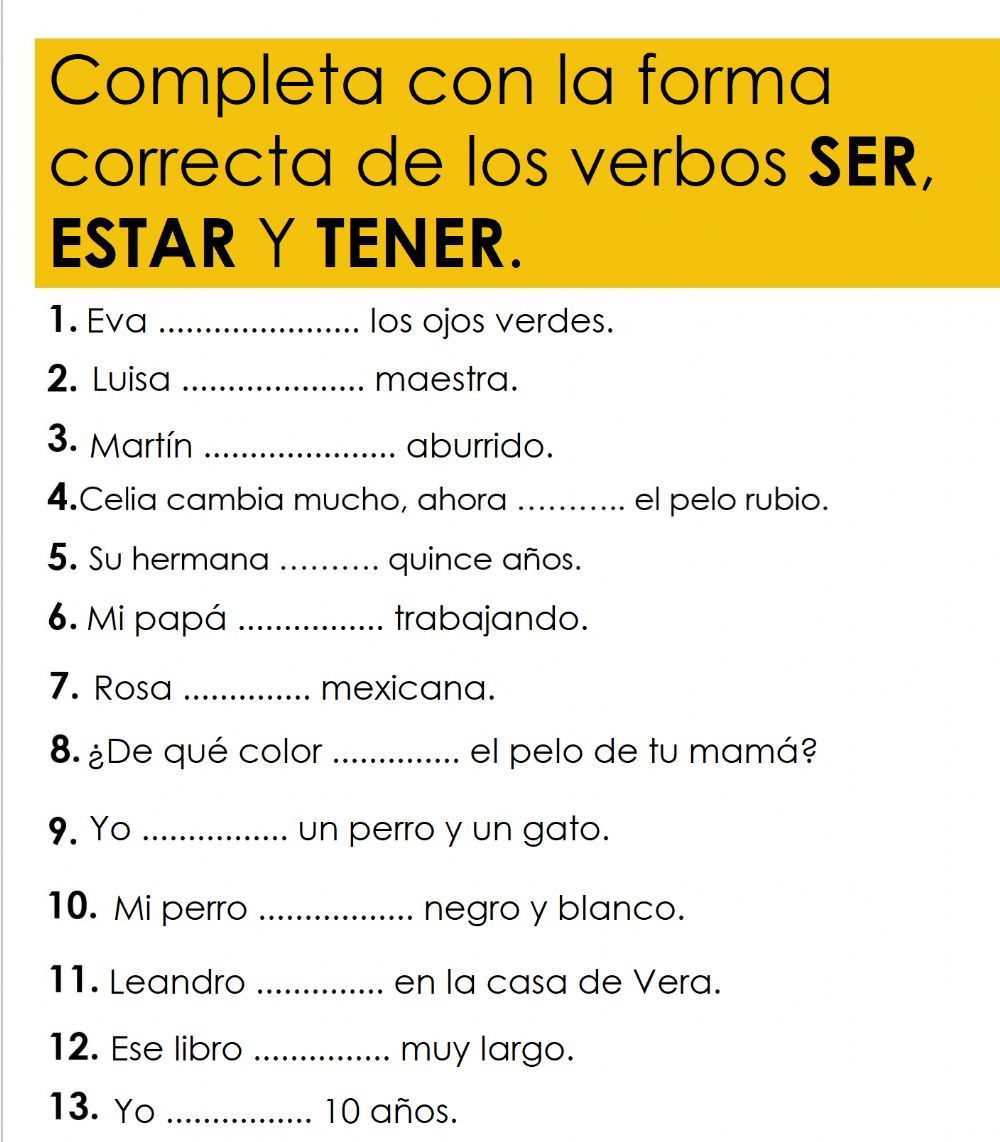
Learning Spanish can be challenging, especially when it comes to understanding the differences between the verbs “ser” and “estar.” These two verbs, both meaning “to be,” have distinct uses and meanings that can sometimes confuse learners. However, with the help of resources like Spanish4teachers.org’s answer key for ser and estar, students can gain a clear understanding of when and how to use these verbs correctly.
The Spanish4teachers.org ser estar answer key provides a comprehensive guide to mastering the usage of “ser” and “estar.” It includes explanations, examples, and practice exercises to help students reinforce their knowledge and improve their skills. Whether you’re a beginner looking to understand the basics or an advanced learner aiming to refine your usage, this answer key offers valuable insights.
By using the Spanish4teachers.org ser estar answer key, students can learn how to differentiate between “ser” and “estar” based on various factors such as permanence, temporary states, identification, and location. This answer key breaks down the rules and contexts in which each verb is used, making it easier for learners to apply them in real-life situations. The clear explanations and examples provided in the answer key ensure that students grasp the concepts effectively.
Understanding the ser vs estar distinction
When learning Spanish, one of the most challenging grammar concepts for English speakers is understanding the distinction between the verbs ser and estar. Both ser and estar translate to the English verb “to be,” but they are used in different contexts and have different meanings.
Ser is used to indicate permanent or inherent characteristics. It is used to describe someone’s identity, nationality, profession, physical appearance, and personality traits. For example, “Soy estudiante” means “I am a student” and “Ella es alta” means “She is tall.” Ser is also used to express time, dates, and origin. For instance, “Son las cuatro de la tarde” means “It is four o’clock in the afternoon” and “Somos de Estados Unidos” means “We are from the United States.”
Estar, on the other hand, is used to indicate temporary states or conditions. It is used to describe someone’s location, health, emotions, and physical conditions. For example, “Estoy en casa” means “I am at home” and “Está enfermo” means “He is sick.” Estar is also used to express ongoing actions or temporary situations. For instance, “Estoy estudiando español” means “I am studying Spanish” and “Estamos ocupados” means “We are busy.”
It is important to remember that the distinction between ser and estar is not always straightforward and there are some exceptions. However, understanding the general guidelines can help learners navigate the intricacies of this grammar concept and use ser and estar correctly in their Spanish conversations.
Ser vs estar: The key differences
Ser and estar are two essential verbs in Spanish that both translate to the English verb “to be.” However, they have distinct meanings and are used in different contexts. Understanding the differences between ser and estar is crucial for achieving grammatical accuracy and conveying the intended meaning in Spanish.
Ser:
- Ser is used to express inherent characteristics, such as physical appearance, nationality, profession, and personality traits. For example, “Soy alta” (I am tall), “Ella es mexicana” (She is Mexican), and “Él es doctor” (He is a doctor).
- Ser is also used to indicate the time and date, as well as to express possession. For instance, “Son las dos de la tarde” (It is two o’clock in the afternoon) and “La casa es de mi madre” (The house is my mother’s).
- Ser is used for generalizations and to describe the nature or essence of a person, place, or thing. For example, “La música clásica es relajante” (Classical music is relaxing) and “La leche es blanca” (Milk is white).
Estar:
- Estar is used to describe temporary states, conditions, or locations. For example, “Estoy cansado” (I am tired), “El libro está en la mesa” (The book is on the table), and “Los plátanos están maduros” (The bananas are ripe).
- Estar is used to indicate a change or temporary condition. For instance, “Está nevando” (It is snowing), “Estoy enojado” (I am angry), and “El agua está caliente” (The water is hot).
- Estar is used to express the result of an action. For example, “La fiesta está divertida” (The party is fun) and “La puerta está abierta” (The door is open).
| Ser | Estar |
|---|---|
| Inherent characteristics | Temporary states or conditions |
| Date, time, and possession | Locations |
| Generalizations | Changes or temporary conditions |
Overall, ser and estar are essential verbs for expressing different aspects of existence, characteristics, and conditions in Spanish. Remembering the key differences between ser and estar will help you use them correctly and effectively in your Spanish conversations and writing.
Ser vs estar: Common uses and examples
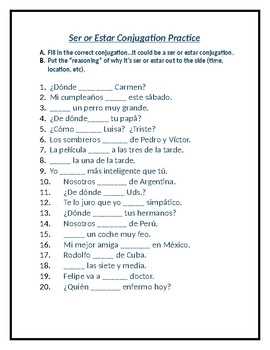
In Spanish, the verbs “ser” and “estar” both mean “to be,” but they are used in different contexts. Understanding the differences between these two verbs is essential for mastering the Spanish language. Here are some common uses and examples of ser and estar:
Ser:
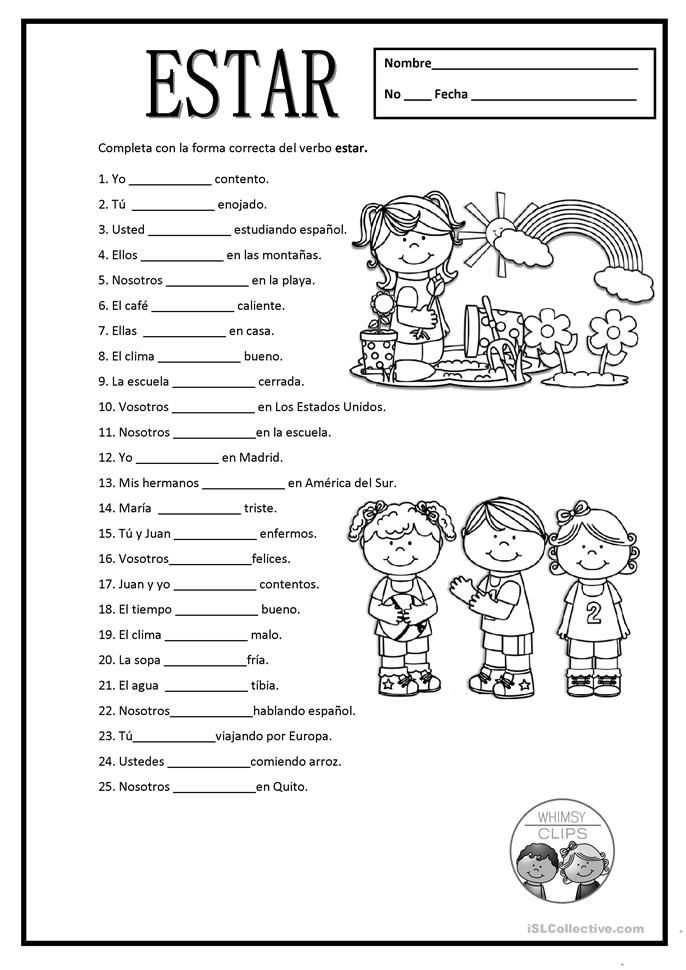
- Identity: Ser is used to indicate permanent qualities or characteristics of a person or thing. For example, “Soy una estudiante” (I am a student).
- Nationality and origin: Ser is used to indicate a person’s nationality or place of origin. For example, “Ella es mexicana” (She is Mexican).
- Profession: Ser is used to indicate a person’s profession or occupation. For example, “Mi padre es médico” (My father is a doctor).
- Time and dates: Ser is used to express the time, days, and dates. For example, “Hoy es martes” (Today is Tuesday) or “Son las dos de la tarde” (It’s two o’clock in the afternoon).
Estar:
- Location: Estar is used to indicate the location of a person or thing. For example, “Estoy en la biblioteca” (I am in the library).
- Temporary states and conditions: Estar is used to indicate temporary states or conditions. For example, “Estoy cansado” (I am tired) or “Está enferma” (She is sick).
- Emotions and feelings: Estar is used to express emotions and feelings. For example, “Estoy feliz” (I am happy) or “Está triste” (He is sad).
- Actions in progress: Estar is used to indicate actions that are currently happening. For example, “Estoy estudiando” (I am studying) or “Están hablando” (They are talking).
Remember that ser and estar have different conjugations and should be used according to their respective contexts. Practice and familiarize yourself with these common uses and examples to better understand when to use ser and estar correctly in Spanish.
Ser vs estar: Answer key for Spanish4teachers.org exercises
Below you will find the answer key for the exercises on the Spanish4teachers.org website that focus on the difference between the Spanish verbs “ser” and “estar”. Understanding when to use each of these verbs is crucial for accurately expressing states, locations, and characteristics in Spanish.
Exercise 1:
- The girl is tired – estar
- The weather is nice – ser
- My brother is tall – ser
- The book is on the table – estar
Exercise 2:
- He is from Mexico – ser
- The car is red – ser
- I am at the park – estar
- The dog is scared – estar
Remember, the verb “ser” is used for more permanent or inherent traits, while the verb “estar” is used for temporary states or conditions. It’s important to practice using these verbs in context to become comfortable with their correct usage.
Ser vs estar: Tips for teaching and learning
When it comes to teaching and learning the difference between ser and estar in Spanish, it can be a challenge for both educators and students. However, with the right approach and some helpful tips, it is possible to make this concept more accessible and easier to understand.
1. Emphasize the essential differences: One of the key points to start with is making sure students understand the fundamental differences between ser and estar. Ser is used for more permanent characteristics, such as describing someone’s nationality or profession, whereas estar is used for temporary states or conditions, such as location or mood. Highlighting these distinctions right from the beginning will set the foundation for a better understanding.
2. Use visuals and real-life examples: Visual aids such as charts or posters can be great tools to help students visualize the differences between ser and estar. Additionally, providing real-life examples that students can relate to will make the concept more meaningful and easier to remember. For example, using photos of different locations or situations and asking students to describe them using the appropriate form of ser or estar.
- 3. Practice, practice, practice: As with any concept in language learning, practice is key. Encourage students to engage in various activities that allow them to practice using ser and estar in context. This can include exercises, role-plays, or even games that involve creating sentences with the correct form of ser or estar.
- 4. Address common mistakes: It’s important to address and correct common mistakes that students might make when using ser and estar. For example, students often use ser to describe temporary conditions or estar to describe permanent characteristics. By highlighting these common mistakes and providing clear explanations, students can develop a better understanding of when to use each verb.
- 5. Provide additional resources: Finally, provide students with additional resources that they can use outside of the classroom to further practice and reinforce their understanding of ser and estar. This can include online exercises, videos, or even recommended reading materials that focus on this specific topic.
By using these tips, educators can create a more effective and engaging learning experience for students when it comes to understanding the difference between ser and estar in Spanish. With time, practice, and the right resources, students can confidently use these verbs in their everyday conversations.
Ser vs estar: Common mistakes and how to avoid them
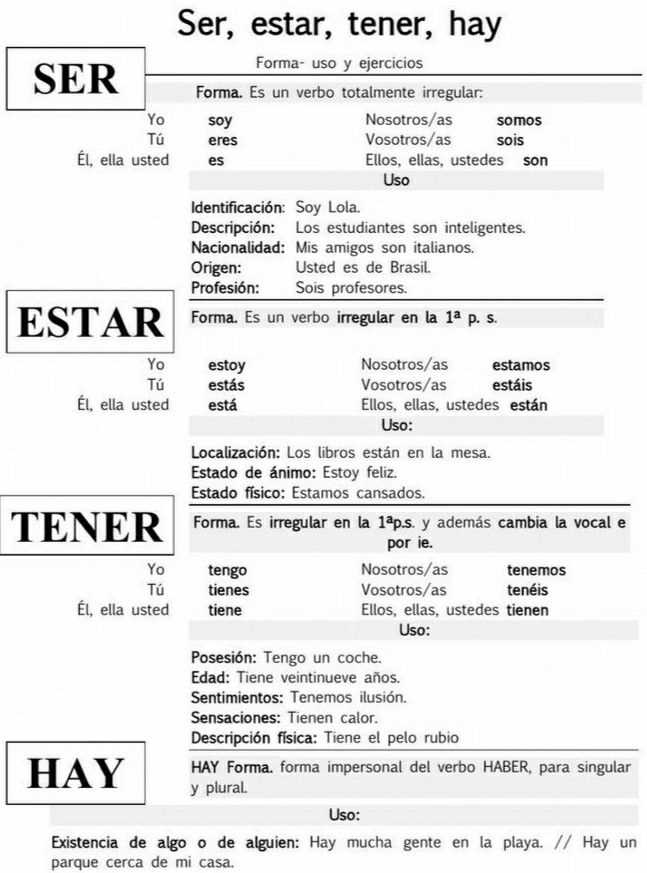
One of the most challenging aspects of learning Spanish is understanding the difference between the verbs “ser” and “estar.” These two verbs both translate to “to be” in English, but they have distinct uses and meanings. Many Spanish learners often make mistakes when trying to use these verbs correctly. In this article, we will explore some common mistakes and provide tips on how to avoid them.
Mistake 1: Using “ser” instead of “estar” to talk about temporary states
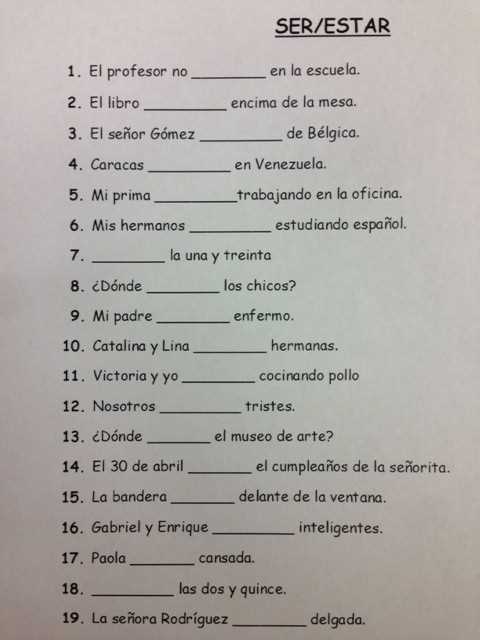
One common mistake is using “ser” instead of “estar” to describe temporary states or conditions. For example, saying “soy cansado” instead of “estoy cansado” to mean “I am tired.” The verb “ser” is used to talk about permanent or inherent qualities, while “estar” is used for temporary states or conditions. To avoid this mistake, remember that if the state can change or is not a permanent characteristic, you should use “estar.”
Mistake 2: Using “estar” instead of “ser” to talk about professions or nationalities
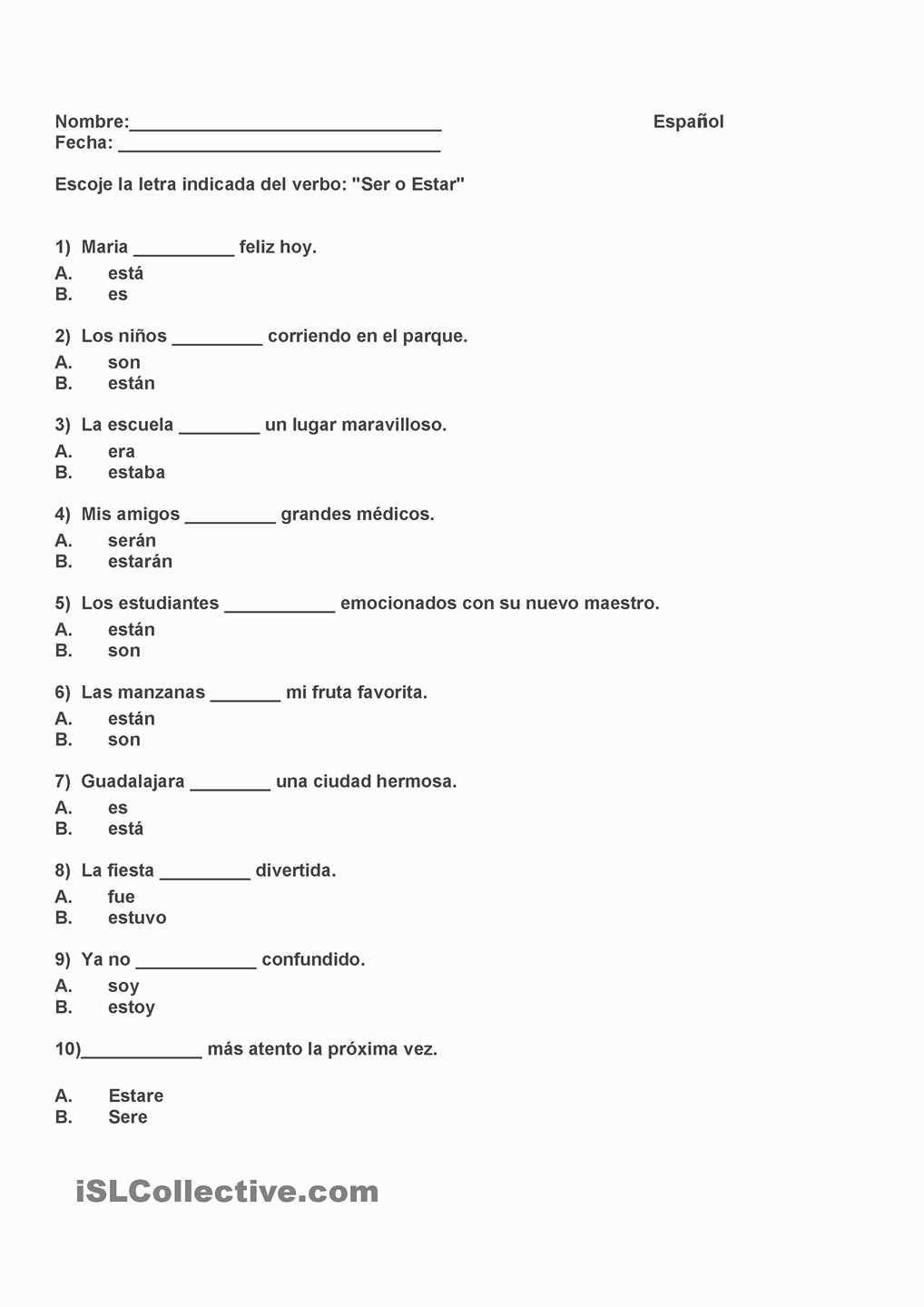
Another mistake is using “estar” instead of “ser” when talking about professions or nationalities. For example, saying “estoy abogado” instead of “soy abogado” to mean “I am a lawyer.” The verb “ser” is used to talk about professions, nationalities, and permanent characteristics. To avoid this mistake, remember that if you are talking about what someone is or what they do, you should use “ser.”
In conclusion, understanding the difference between “ser” and “estar” is essential for mastering Spanish. By avoiding these common mistakes and practicing the correct usage, you will be able to express yourself more accurately and confidently in Spanish. Remember to pay attention to the context and the specific meaning you want to convey to choose the appropriate verb. ¡Buena suerte!
Ser vs estar: Resources for further practice and study
Now that you have learned the basics of ser and estar, you can continue to practice and improve your understanding of these verbs. Here are some resources that can help you further consolidate your knowledge:
- Online exercises: There are several websites that offer interactive exercises and quizzes to practice ser and estar. Some popular ones include SpanishDict, StudySpanish.com, and 123TeachMe. These websites provide a variety of exercises at different difficulty levels, allowing you to test your knowledge and reinforce what you have learned.
- Language exchange: Find a language exchange partner who speaks Spanish and is learning your native language. Practicing with a native speaker can help you gain more confidence in using ser and estar in real-life conversations. You can search for language exchange partners on websites like Tandem and InterPals.
- Grammar books: Invest in a good Spanish grammar book that provides detailed explanations and exercises on ser and estar. Some recommended books include “Practice Makes Perfect: Spanish Verb Tenses” by Dorothy Richmond and “The Big Red Book of Spanish Grammar” by Gilda Nissenberg. These books can serve as comprehensive resources for studying and reviewing the usage of ser and estar.
- Flashcards: Create your own flashcards or use online flashcard apps like Anki or Quizlet to practice ser and estar. Write down example sentences or questions on one side of the flashcard and the corresponding correct form of ser or estar on the other side. Regularly reviewing these flashcards will help you memorize the conjugation and usage of these verbs.
- Tutoring or language classes: If you prefer a more structured approach, consider enrolling in a Spanish language class or hiring a tutor who specializes in teaching grammar. A tutor or teacher can provide personalized instruction and feedback, helping you address any specific challenges or questions you may have about ser and estar.
By using these resources, you can continue to practice and refine your understanding of ser and estar. Remember that mastery of these verbs requires ongoing practice and exposure. Keep exploring and engaging with the language to strengthen your skills and become more confident in using ser and estar correctly.